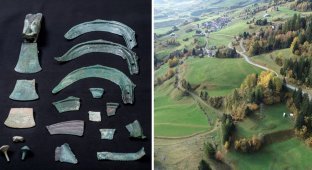Ancient Bone Floor Discovered in Red Light District (4 photos)
Dutch archaeologists were excavating a 1609 building in Alkmaar before renovating it when they discovered a floor made of bones. Experts believe it was laid down around 500 years ago when the house was built. 
The remains are the metacarpal and metatarsal bones of the lower limbs of cattle. The bones were covered in a thin layer of sandy clay rock, on top of which lay slabs.
"The building itself was built in 1609," said Nancy de Jong, an archaeologist with the municipality of Alkmaar. "It is possible that the foundations and the lower floor level where the bones were found are much older. Often houses were built on older foundations." 
Alkmaar is thought to be around 1,000 years old, as the city was first mentioned in a document dating back to the 10th century.
The municipality of Alkmaar commented on the find: "The question is, of course, why did they choose bones to fill the spaces between the tiles? Tiles were not expensive and were used quite often. Perhaps the bones were placed there for a special reason."
"It is always a great joy to discover something from a long-gone era and to gain new information about the history of Alkmaar," added Jong.
Similar floors have been found in the past in Hoorn, Enkhuizen and Edam, which, like Alkmaar, are located in North Holland. In Hoorn, bones were also used in combination with tiles, suggesting that this was a special method of the tilers. 
Achterdam is a red light district in the city of Alkmaar, about 30 km north of Amsterdam. The first brothel opened here in 1973 - at that time it was a street where mainly traditional craftsmen lived, such as barrel makers, hat makers and rope makers. 



























